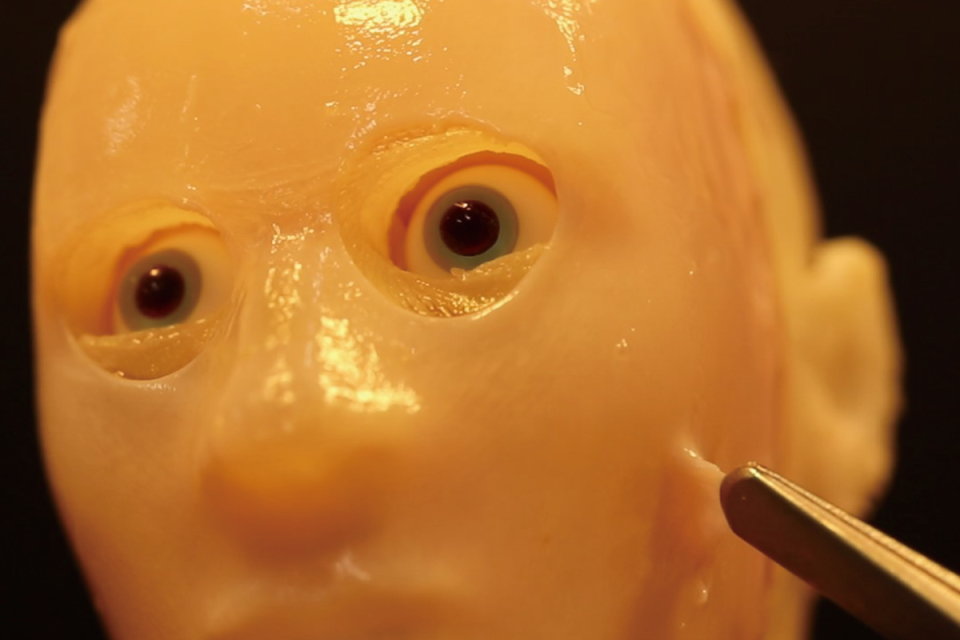Robot face with living skin can smile ‘like a human’

Scientists in Japan have grafted living human skin onto the face of a humanoid robot in an effort to give machines a more lifelike appearance.
In a groundbreaking procedure, a team from the University of Tokyo were able to make a robot smile by binding engineered skin tissue to the complex form of its head.
The research could herald a new era of humanlike robots that have improved sensing capabilities and the ability to self-heal if injured, according to the scientists.
“Living skin can bring a range of new abilities to robots,” said Shoji Takeuchi, a professor at the University of Tokyo who led the research.
“Self-healing is a big deal – some chemical-based materials can be made to heal themselves, but they require triggers such as heat, pressure or other signals, and they also do not proliferate like cells. Biological skin repairs minor lacerations as ours does, and nerves and other skin organs can be added for use in sensing.”

Professor Takeuchi and his team made special perforations in the robot’s face to mimic human skin-ligament structures, allowing them to manipulate its features to form expressions.
The researchers now hope to develop the living skin to make humanoid robots even more realistic in both appearance and function. Future versions could include features like wrinkles, pores, blood vessels, fat and sweat glands.
“Movement is a crucial factor, not just the material, so another important challenge is creating humanlike expressions by integrating sophisticated actuators, or muscles, inside the robot,” Professor Takeuchi said.
“Creating robots that can heal themselves, sense their environment more accurately and perform tasks with human-like dexterity is incredibly motivating.”
Previous research into robotic skin has already led to the development of artificial skin that has more sensing features than human skin, such as the ability to detect pollution in a river or traces of explosives on a piece of abandoned luggage.
A paper detailing the latest research, titled ‘Perforation-type anchors inspired by skin ligament for the robotic face covered with living skin’, was published in the journal Cell Reports Physical Science on 25 June.


